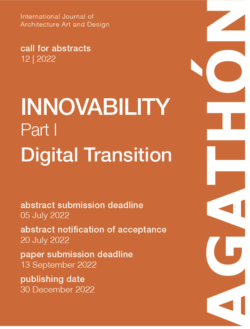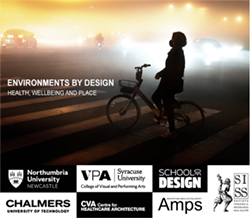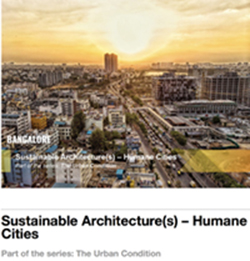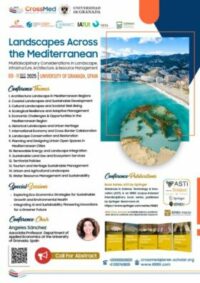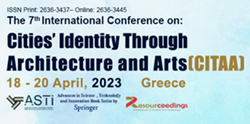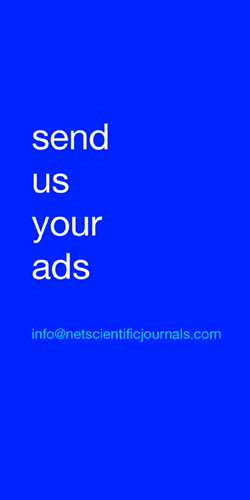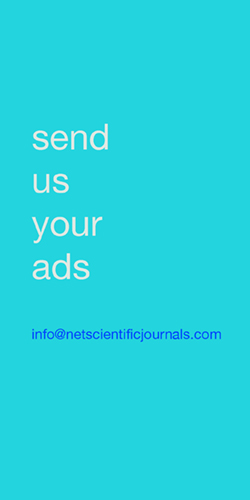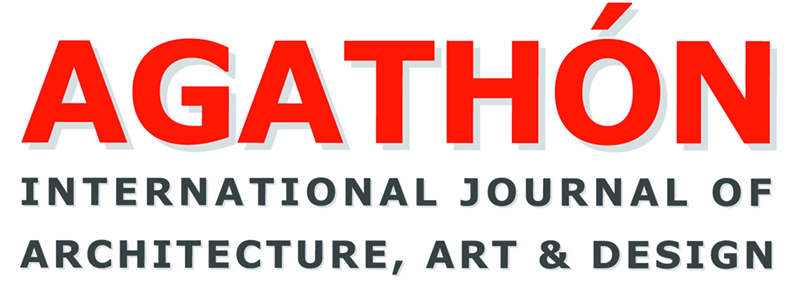ISSN (print): 2464-9309
ISSN (online): 2532-683X
Call of the Journal:
- GREENERY | Its symbiosis with the built form
- INNOVABILITY (part I) | Digital Transition
- INNOVABILITY (part II) | Ecological Transition
- INNOVABILITY (part III) | Energy Transition
- LINKS | Physical, Virtual, Digital
- MODULE | for Landscape, City, Architecture, Objects
- MODULE | for Landscape, City, Architecture, Objects
- Possible and Preferable Scenarios of a Sustainable Future | Towards 2030 and Beyond
- SDGs 1, 2, 3, 4 and 5 | Projects, research, synergies, and trade-offs
- SECOND LIFE | Regeneration, refunctionalisation, enhancement, re-cycling and up-cycling
Feb
2021
Feb
2021
Mar
2021
Apr
2021
Jun
2021
The International Scientific Committee, for its issue n. 9|2021, which will be published in June, promotes the topic Second Life | Regeneration, refunctionalisation, enhancement, re-cycling and up-cycling. The subjects of climate change, excessive use of soil, renewable resources, ever-increasing production of waste, the current pandemic emergency and the global socio-economic crisis that it is causing, have in fact entered our daily life. Even if these are dramatic issues, they can be, somehow, seized as an opportunity to rethink the way we live and our world. In this ‘revolutionary’ (Floridi, 2020) and ‘polycrisis’ (Losasso, 2020) context, specifically referring to the building industry, the Academy, the Research and the Industry worlds are called to give answers – based on sustainability and the principles of the Green Deal – that can stimulate reconsiderations and re-orientations of processes and products, new projects on places, buildings, objects and materials, able to positively affect the governance of the global change that our planet and humanity need, able to give a ‘second life’ to the built and/or transformed environment, at any scale. In the light of these considerations, the Call of AGATHÓN 9, turning to disciplinary areas of the Project and in particular of Landscape, Urbanism, Architecture, Engineering, Architectural Technology, Design, Restoration Recovery, and Representation, presents the subject Second life | Regeneration, refunctionalisation, enhancement, re-cycling and up-cycling with the aim of collecting essays and critical reflections, original research and experiments, projects and actions on the following subjects.
Regeneration | Environment, City, Infrastructures. New Landscapes where the community continues its path of recognition as an active part of the economy and social relations in a specific context. An idea of democratic and inclusive but also resilient territories and cities that by understanding the ongoing socio- economic dynamics, renew and regenerate natural and built spaces, territorial and productive frameworks, vulnerable and fragile areas, they become an active connection able to respond to the phenomena of ‘progressive dispersion’ and to the increasingly pressing and imperative safety, inclusiveness, pandemic and emergency vulnerability issues with smart and human centred approaches.
Refunctionalisation | Building. Recovery, up-cycling and refunctionalisation of the existing building are some of the implementation strategies to aim for in order to efficiently use the resources. As an alternative to the concept of demolition and reconstruction, recovery as well as up-cycling and refunctionalisation adapt the building to new emerging use, technical-performance, regulation needs. Flexibility, multifunctionality and modularity, new spatiality and configurations, relations with the context, front and threshold, safety, salubrity, energy efficiency and resource savings, service life, are just some of the possible fields of study.
Enhancement | Cultural Assets. The ‘passive preservation’ can no longer be the ultimate goal of the intervention: the more marked the cultural heritage is in its material and intangible, natural and anthropic elements, the more there is a need for actions aiming to give new ‘dignity’ and new life to these Goods, sometimes ruins, deprived of their original identity, both to be enjoyed by current generations and to be passed on to future ones. Enhancement, enjoyment, communication and accessibility also applied through digital potentialities, are fields of study just as multidisciplinary holistic and systemic methodological approaches capable of reading, interpreting and translating into actions the complex relations between pre-existing elements, natural context and added anthropic systems.
Re-cycling and Up-cycling | Objects, materials, components. Re-manufacturing, re-cycling and up-cycling as alternative to the concept of disposable come into play in the building industry, through a creative process or together with new sharing and product/service methods. Intersectorial and interscalar subjects, open research fields on urban mining and material bank, end-of-life or Design for Disassembling and for Durability/Flexibility approaches, outlined on the material and product scale in terms of recyclability, qualification procedures, traceability, material passport, but also of the definition of tools for the analysis of material flows and the quality of end-of-life products and support to decisions to verify the effectiveness and sustainability of circularity actions.
SECOND LIFE | Regeneration, refunctionalisation, enhancement, re-cycling and up-cycling
The International Scientific Committee, for its issue n. 9|2021, which will be published in June, promotes the topic Second Life | Regeneration, refunctionalisation, enhancement, re-cycling and up-cycling. The subjects of climate change, excessive use of soil, renewable resources, ever-increasing production of waste, the current pandemic emergency and the global socio-economic crisis that it is causing, have in fact entered our daily life. Even if these are dramatic issues, they can be, somehow, seized as an opportunity to rethink the way we live and our world. In this ‘revolutionary’ (Floridi, 2020) and ‘polycrisis’ (Losasso, 2020) context, specifically referring to the building industry, the Academy, the Research and the Industry worlds are called to give answers – based on sustainability and the principles of the Green Deal – that can stimulate reconsiderations and re-orientations of processes and products, new projects on places, buildings, objects and materials, able to positively affect the governance of the global change that our planet and humanity need, able to give a ‘second life’ to the built and/or transformed environment, at any scale. In the light of these considerations, the Call of AGATHÓN 9, turning to disciplinary areas of the Project and in particular of Landscape, Urbanism, Architecture, Engineering, Architectural Technology, Design, Restoration Recovery, and Representation, presents the subject Second life | Regeneration, refunctionalisation, enhancement, re-cycling and up-cycling with the aim of collecting essays and critical reflections, original research and experiments, projects and actions on the following subjects.
Regeneration | Environment, City, Infrastructures. New Landscapes where the community continues its path of recognition as an active part of the economy and social relations in a specific context. An idea of democratic and inclusive but also resilient territories and cities that by understanding the ongoing socio- economic dynamics, renew and regenerate natural and built spaces, territorial and productive frameworks, vulnerable and fragile areas, they become an active connection able to respond to the phenomena of ‘progressive dispersion’ and to the increasingly pressing and imperative safety, inclusiveness, pandemic and emergency vulnerability issues with smart and human centred approaches.
Refunctionalisation | Building. Recovery, up-cycling and refunctionalisation of the existing building are some of the implementation strategies to aim for in order to efficiently use the resources. As an alternative to the concept of demolition and reconstruction, recovery as well as up-cycling and refunctionalisation adapt the building to new emerging use, technical-performance, regulation needs. Flexibility, multifunctionality and modularity, new spatiality and configurations, relations with the context, front and threshold, safety, salubrity, energy efficiency and resource savings, service life, are just some of the possible fields of study.
Enhancement | Cultural Assets. The ‘passive preservation’ can no longer be the ultimate goal of the intervention: the more marked the cultural heritage is in its material and intangible, natural and anthropic elements, the more there is a need for actions aiming to give new ‘dignity’ and new life to these Goods, sometimes ruins, deprived of their original identity, both to be enjoyed by current generations and to be passed on to future ones. Enhancement, enjoyment, communication and accessibility also applied through digital potentialities, are fields of study just as multidisciplinary holistic and systemic methodological approaches capable of reading, interpreting and translating into actions the complex relations between pre-existing elements, natural context and added anthropic systems.
Re-cycling and Up-cycling | Objects, materials, components. Re-manufacturing, re-cycling and up-cycling as alternative to the concept of disposable come into play in the building industry, through a creative process or together with new sharing and product/service methods. Intersectorial and interscalar subjects, open research fields on urban mining and material bank, end-of-life or Design for Disassembling and for Durability/Flexibility approaches, outlined on the material and product scale in terms of recyclability, qualification procedures, traceability, material passport, but also of the definition of tools for the analysis of material flows and the quality of end-of-life products and support to decisions to verify the effectiveness and sustainability of circularity actions.
ANVUR, GOOGLEScholar, DOAJ, BASE, OpenAIRE, JURN, WorldCat, MIAR, ULRICHSWEB, ICI, IP Indexing, ROAD, EZB, EBSCO, ERIH PLUS, ResearchBib, OAJI. AGATHÓN is also indexed in Digital University Library in North America, South America, Europe, Asia, Australia and Africa.
The contribution for Author of a single paper is set at € 350.00. In the case of papers written by more Authors, the article publication fee will be increased by € 50.00 for each corresponding Author in addition to the first two. The fee must be paid in accordance with the directions that will be sent to the Authors at the same time as the communication of acceptance of the paper for publication. Two corresponding Authors with primary affiliations based in countries defined by the World Bank as “Lower-Middle-Income Economies” are entitled to apply for a 50% discount on the normal APC.
To encourage the publication of contributions by Authors with primary affiliation to Universities and Research Institutions in countries defined by the World Bank as ‘low-income and lower-middle-income economies’, AGATHÓN will select a maximum of two Authors to publish their contribution for free, subject to the positive outcome of the double-blind peer review process.

